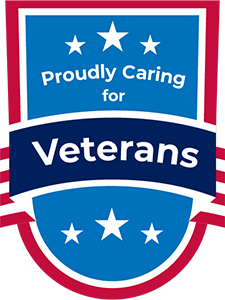Some common activities have a massive therapeutic value, making them an excellent resource to use when you are going through addiction treatment. You can practice activities as a way to connect with yourself, your feelings, and those around you. Using skills learned in our treatment options can make the difference in short term vs. long term sobriety. We are experienced in treating alcohol and drug addiction, using proven effective methods of addiction treatment. Our programs teach a new way of life, in addition to how to prevent relapse. Our treatment centers use therapy approaches that include activity therapy, to encourage healthy habits instead of maladaptive ones.
Drug or alcohol addiction treatment should always provide coping skills to be used as a way to manage stressors or cravings. Even behavioral therapies, family therapy, and group therapies will utilize certain activities to enrich the recovery process and promote self-expression. Our treatment programs stabilize behavioral health while also treating substance use disorders with a holistic approach of treating the mind, body, and spirit.
These therapeutic activities can be used to distract from distress, work through emotion, and replace harmful habits. At Royal Life Centers, we believe in the power of treating the mind, body, and spirit for a full recovery. Practicing these therapeutic activities can grow you mentally, physically, and spiritually, and you can find joy in doing them!
Here are 30 therapeutic activities to practice in and out of recovery:
1.Coloring
Using coloring books is a therapeutic activity that can calm the mind by allowing it to focus on something simple. Often times in recovery, alcoholics and addicts can deal with a wave of emotions, coloring using a coloring book is helpful in giving the mind something very simple to focus on.
2. Journaling
Journaling has extreme therapeutic value. Journaling is not just helpful in the moment, however it allows for one to understand their thought processes and emotions better. Journaling is very helpful in the recovery process, as it often allows for the alcoholic or addict to see where they’re at mentally and emotionally.
3. Painting
Painting is very therapeutic, as it also allows for someone to be focused solely on what they’re doing. Any activity that allows for creative expression is beneficial to use in recovery.
4. Listening to music
Music has the power to change or enhance your mood, therefore being a great resource for those in recovery. Feel good music is motivational and clinically proven to provide emotional support to those in addiction treatment.
5. Scrapbooking/Collaging
Making a collage can be beneficial to those in recovery, as it can encourage productivity. Starting and finishing a project can be a powerful mode of encouragement. Visual connections to emotions can be made as a form of self-expression.
6. Knitting
Knitting is therapeutic in its ability to strengthen sensory-motor function, allowing for one to truly focus on what they’re doing with methodical repetition. Creation of any kind is beneficial for recovery.
7. Create a “calm down” jar
The process of creating and enjoying a “calm down” jar is therapeutic. You can make one of these jars with household items as the containers, like a glass or plastic bottle, jar, or any container that’s clear. All you need to make one of these jars are small items like: glitter, plastic pieces, stars, figurines, dice, marbles, etc. To make a “calm down” jar, just place the items inside of the jar, and fill the jar with water. You can add food coloring to change the color of the jar’s liquid. Once the jar is full, place the lid on tightly and glue it down. Shake the jar, turn it upside down, and watch the items float through the liquid. This activity is very calming, both to create and to look at.
8. Play games
Games like 21 questions, I-Spy, etc. are great to improve cognitive memory and also to increase one’s focus on the task at hand. These games are therapeutic as they also build communication skills among those playing.
9. Draw a mandala
Mandalas are circular drawings that consist of repetitive designs within a series of circles. Focus and calm down by focusing on one design at a time, as a therapeutic tool of distress tolerance.
10. Create a “worry box”
Tactile activities that allow for creative self-expression are extremely beneficial for both mindfulness and tolerating stress. Buying a small wooden box and crafting supplies, you can prepare for a therapeutic activity. Decorate the box with paint, glitter, paper, etc. Use the box to house any symbolic items or pieces of paper that have “worries” written on them. This activity is actually quite common for the therapeutic treatment of guests who suffer from trauma. Commonly used as a guided meditation exercise, physically creating a secure box to store your “unwanted” emotions or worries in, can put a visual counter piece to the practice of emotional regulation. Giving guests the idea that they are in control of their worries and emotions is the purpose of this activity.
11. Go for a walk
Going for a walk outside is an underrated way to clear your mind and practice mindfulness. Try going for a walk and focus on your surroundings. What can you see? What color are the leaves on each tree? Are you passing patches of grass or flowers? Are there clouds in the sky?
12. Cooking
Cooking is therapeutic because it not only incorporates expression, but the sensory details associated with cooking encourage mindfulness. Cooking is also a rewarding process, as you put in effort and are rewarded with a meal. Cooking is a healthy therapeutic activity, as it also teaches us that doing something good for ourselves—like nourishing our bodies- can also help us relax.
13. Meditate
Meditation is the practice of silencing the mind of any distractions, taking a few moments or minutes to focus on your well-being. Meditation has a variety of benefits, including spiritual growth. Try sitting on the ground and focusing on the way your body feels in that moment. Is there any tension? Breathe into the areas of tension, one at a time. Visualize the tension easing itself up with each deep breath. One can also use guided meditations to help them meditate and reach a state of relaxation.
14. Play with clay
Having time to play with clay or play dough is therapeutic because of the value it brings to have control over the material in your hands. Do you want to mold the material into any particular shape? Maybe just squeeze the material to release stress. Keeping your hands busy can help with distress tolerance, and the possibilities in molding a material promote self-expression.
15. Build with kinetic sand
Building something with kinetic sand allows for you to stay mindful by focusing on the sensation of the material in your hands. Any activity that healthfully promotes creation is therapeutic as well.
16. Do a crossword puzzle or sudoku
Keep your mind focused on a crossword puzzle or sudoku, it not only improves cognitive function, but allows the participant to focus on one goal at a time and gives them small rewards along the way.
17. Make a dreamcatcher
Making dreamcatchers are a great way to visualize serenity. Dreamcatchers are representative of an object that catches negative thoughts and energies while you are sleeping, to protect against negativity. Making a dreamcatcher can be a relaxing activity, that will also provide a deeper meaning for the creator, as a symbol of protection.
18. Write a letter
Sometimes, snail mail is the most meaningful way to receive a message. Sitting down to write a letter is a therapeutic process, as it allows for the participant to focus on their thoughts in a way that produces something for another person that they care about. Whether or not you want to send the letter, the process of writing down your true thoughts and feelings to another person is always a therapeutic practice.
19. Progressive muscle relaxation
Progressive muscle relaxation is an extremely helpful technique, for both relaxation and as a method to fall asleep. The way it works is focusing on the way each muscle feels, starting from your head and moving down to your toes. Focus on the way each part of your body feels as you move downwards imaginatively. Visualizing your focus on each muscle as you make a cognitive decision to relax that part of your body before continuing to move along.
20. Write a gratitude list
List-making is a great way to focus your attention on one subject. This is a great way to control racing thoughts, by focusing on one topic to guide your train of thought. Writing a gratitude list, or a list of things you are grateful for, is a therapeutic practice that promotes gratitude and positivity. This is an active way to focus on the positive things in life, especially if you are feeling down.
21. Origami
Origami, or the Japanese art of paper-folding, is a therapeutic activity that puts cognitive motor functions to work. Origami is therapeutic, as a series of small motions can come to life before your eyes.
22. Have a cup of tea
Both making a cup of tea, and drinking it, is a therapeutic activity. The process of making a cup of tea is methodical, and allows for the mind to focus on small tasks at a time. The smell of the tea, the feeling of the mug in your hands, the taste of the tea, and noticing the steam coming from the cup are all mindfulness practices.
23. Ripping paper
Paper cutting can be used as a task to relieve stress or anxiety, by giving the mind something “mindless” to focus on. Ripping paper is therapeutic, and can be a visual aid for those in recovery to picture “ripping up” their stressors or worries.
24. Read a book
Reading is a very therapeutic activity. It allows for those in recovery to get lost in a different world, recognize other perspectives, visualize something different, etc. Reading is a great tool to use to distract, practice distress tolerance, and encourage focusing on something different for the moment.
25. Squeeze a stress ball
An old therapeutic activity, but an effective one is using a stress ball to squeeze in times of distress. Having a tactile item to focus your attention on can be of huge therapeutic value in recovery.
26. Play with a fidgeting device
Fidget spinners and fidget cubes are growing in popularity, and are actually extremely helpful for those with anxiety. These devices allow for a sensory connection in moments of distress, which teaches those in recovery to stay in the present moment and also teaches distress tolerance.
27. Watch a comedy
Whether it’s a show or movie, watching something light-hearted can be a therapeutic activity that can distract and provide a totally different emotion in times of sadness. Watching a comedy can usually bring about laughter, which actually releases feel-good chemicals in your brain.
28. Do a puzzle
Working on a puzzle can improve cognitive function, and allows for those in recovery to work on something at their own pace. Having a clear goal in mind is beneficial for those in recovery to do a productive task, with small rewards along the way that encourage them to keep going.
29. Boardgames
Playing a board game subtly teaches others how to grow their team building skills and interpersonal effectiveness. Having a common goal
30. Take a bubble bath
Taking a bubble bath is a sensory experience that encourages relaxation and mindfulness. Hydrotherapy is also an extremely beneficial therapeutic tool in recovery, especially during medical detox to alleviate withdrawal symptoms of discomfort.
If you are seeking treatment, please reach out to our addiction specialists at (877)-RECOVERY or (877)-732-6837. Our team is available to speak with you 24/7. Because We Care.





